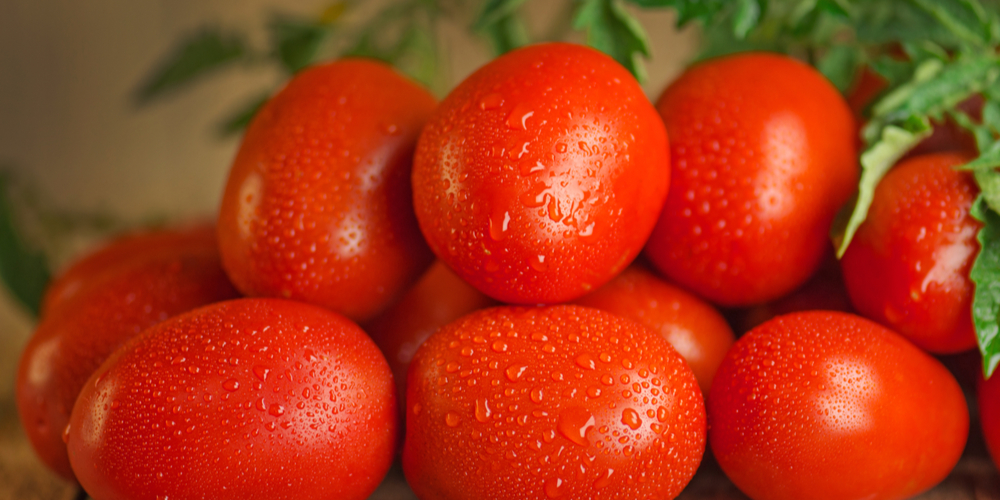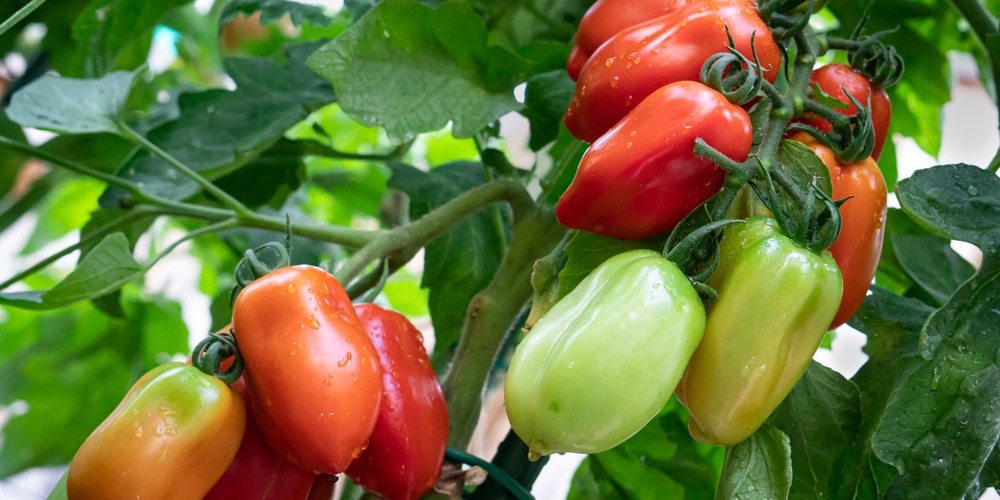Paste tomatoes are a special type of tomato that is great for cooking sauces or making tasty spreadable pastes. They are generally larger than other tomato varieties and have an elongated shape. This article will teach you everything you need to know about paste tomatoes, including different varieties, how to grow and care for your plants and use them in your recipes.
Varieties of paste tomatoes

There are many varieties of paste tomato, each with its own unique flavor and texture. Here are some of our favorites:
Roma
Roma tomatoes are one of the most common and popular varieties of paste tomatoes. It has a pleasant sweet flavor and texture, making it ideal for everything from sauces to pastes and canning.
San Marzano
This Italian variety is also very popular among chefs because of its excellent taste and high yields. It is used in many sauces and pastes and is an excellent choice for those who are new to growing paste tomatoes.
Amish Paste
This variety has been popular among chefs for generations because of its versatility and exceptional taste. It’s perfect for canning, making sauces, or drying out into paste.
How to grow paste tomatoes
If you’re looking for great-tasting paste tomatoes, try growing your own. You can find paste tomato seeds at your local gardening store or online; they’re very easy to grow. Alternatively, look for a young plant that can be added to your greenhouse or vegetable plot.
Planting your seeds
To start growing your paste tomatoes, you will first need to choose a sunny spot with well-drained soil. Once you have selected the planting location, you can begin sowing your seeds.
To do this, simply dig small holes about two inches deep in the ground and drop one or two seeds into each hole. Be sure to space the holes about twelve inches apart so there will be plenty of room for your plants to grow.
If you want to get ahead of the growing season, you can plant your tomato seeds indoors on a windowsill in the early spring. When the threat of frost has passed, you can transplant the seedlings outdoors.
Watering
After sowing the seeds, you should water the soil thoroughly. Make sure the soil is consistently moist throughout the growing season, and water your plants early in the morning so it won’t evaporate or burn the plant’s leaves.
Fertilizing
Once your paste tomato plants have started to grow, you will need to add fertilizer to the soil. You can apply a balanced fertilizer in the spring and keep feeding it throughout the growing season. This will help ensure that your plants get the nutrients they need to produce many delicious, juicy tomatoes.
Pruning
When your paste tomato plants start to reach about two feet tall, you may like to prune your plant. This will help the plants grow stronger and produce more fruit. Pruning will also help you maintain the plant’s size and appearance.
Simply pinch off any new growth that appears near the base of the plant, as this will help redirect energy to the growing branches above.
Soil
In order to grow your own delicious paste tomatoes, it’s important to maintain good soil health. To do this, you should add compost or other organic materials to the soil each year and keep it well-drained. This will ensure that your plants get the nutrients they need and can thrive in your garden.
Tomatoes grow best in soil that is fairly acidic. They like the soil to have a pH range of between 6.0 and 6.5.
Pests and disease
If you notice any pests or diseases affecting your plants, address them immediately so that they don’t spread and affect the rest of your crop. Some common pests that affect tomato plants include aphids and white flies. These can be killed using an insecticide.
It would help if you also looked out for caterpillars, slugs, and snails, which will eat your plant’s foliage. You can remove these types of pests by hand.
Temperature
Finally, keeping your paste tomato plants in a warm and sunny location is essential. This means you should avoid planting them near other trees or large shrubs, which can create too much shade. You may also need to provide some screening on hot days if the sun gets too intense.
Harvesting
As your paste tomato plants start to produce fruit, you will need to regularly check them and harvest ripe tomatoes as they become ready. You will typically know when a tomato is ripe as it will be firm, juicy, and deep red. You can use your fresh tomatoes for cooking.
Conclusion
No matter which variety you choose, paste tomatoes are excellent for your home garden! They’re easy to grow and very versatile in the kitchen. Now that you know how to grow paste tomatoes, what will you make with them?
